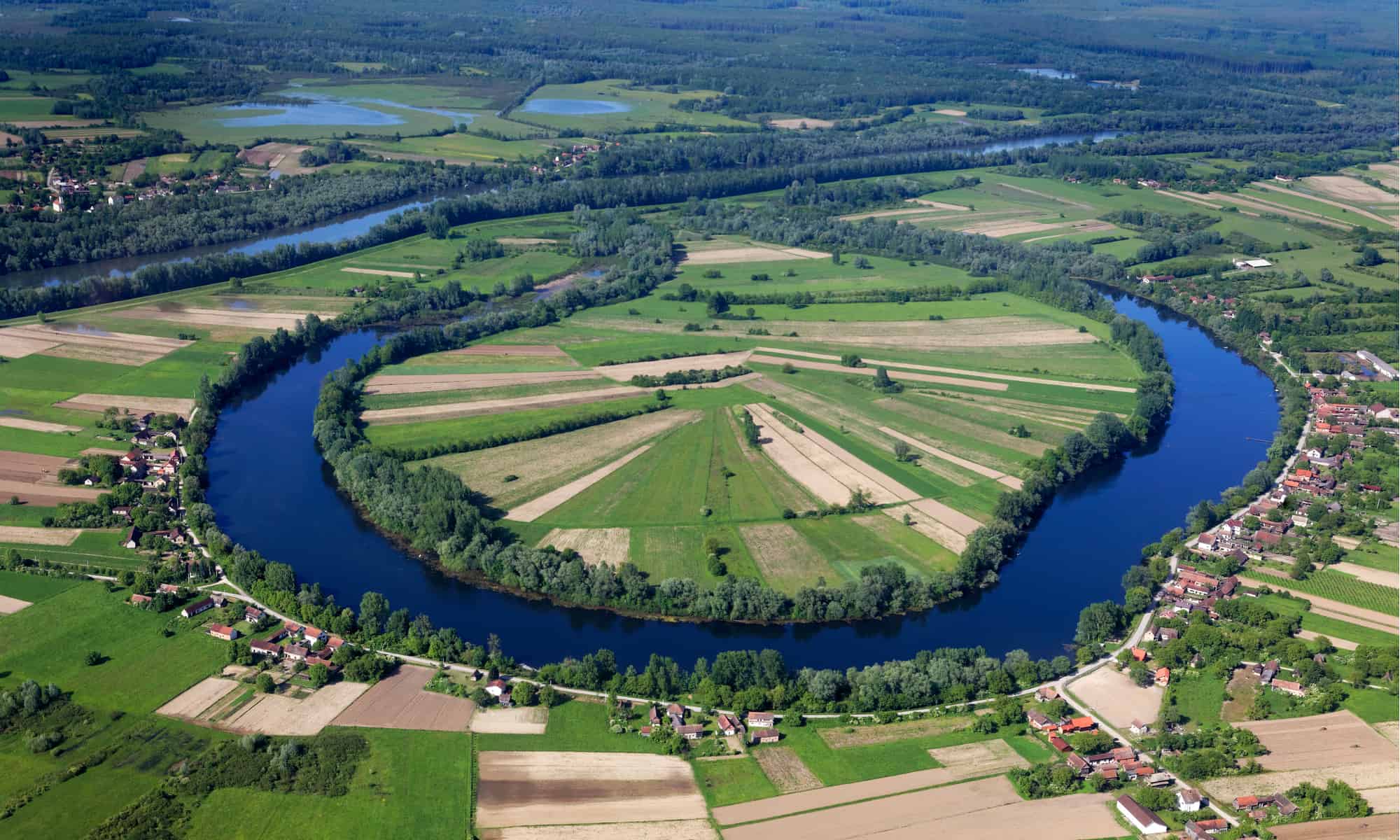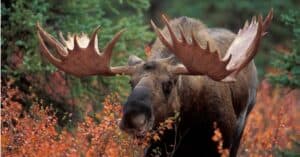Quick Answer:
- An Oxbow Lake is a body of water that resembles the shape of a curved loop or a U-turn.
- It’s formed in steps: meander formation, neck narrowing, cut-off and formation of the Oxbow lake, and finally transformation into an Oxbow lake.
These unique water features have a captivating story to tell about the ever-changing landscapes of our planet. Picture a meandering river, flowing tirelessly across the land. But rivers are wanderers, and sometimes they decide to take a new path. This is where the magic happens. When a river changes its course, it leaves behind a loop of water, like a forgotten bend in its journey. That abandoned loop becomes an oxbow lake.
On this page, we’ll break down everything you need to know about these unique (and beneficial) geological formations. Let’s start by exploring how exactly they are formed.
What is an Oxbow Lake and How Does It Form?
Oxbow lakes are water bodies that resemble the shape of a curved loop or a U-turn. These intriguing features often occur alongside rivers and are known for their distinct, almost horseshoe-like, outlines. Unlike the calm, steady waters of typical lakes, these lakes have a unique tale of formation that involves the power of flowing rivers and the gradual passage of time.
The Formation Process
The story of an oxbow lake begins as a river journeys through the land, its currents carving intricate paths. As a river flows, it constantly shifts sediments, eroding banks, and shaping the surrounding landscape. Over time, the river’s course can change due to various factors, such as the force of its currents or the accumulation of debris in its bed.
1. Meander Formation
Rivers often develop bends called meanders. Picture a snake winding its way across the ground; that’s a meander! The outer bank of the meander experiences faster-flowing water and thus undergoes more erosion, while the inner bank faces slower water and accumulates sediment. As the outer bank erodes, the meander’s bend becomes more pronounced.
2. Neck Narrowing
As the outer bend erodes, the meander’s neck – the narrow land connection between the two curved sections – becomes thinner and more fragile. This sets the stage for a dramatic transformation in the landscape.
3. Cut-off and Formation of Oxbow Lake
Eventually, the meander’s neck weakens to the point where the river’s strong currents breakthrough, creating a shortcut. During floods or periods of high water flow, the river takes this shortcut, leaving the old meander loop mostly abandoned. What was once a thriving part of the river’s journey is now isolated from the main flow.
4. Transformation into an Oxbow Lake
With time, the abandoned meander becomes an oxbow lake. The water within the lake is often stagnant, lacking the energetic currents of the main river. The lake’s shape mirrors the former meander’s curve, and its calm waters attract diverse forms of life. Plants thrive along the shoreline, and animals find refuge in the tranquil oasis.

Oxbow lakes can form around the world in places like Alberta, Canada (pictured).
©wonganan sukcharoenkana/iStock via Getty Images
Where Oxbow Lakes Form
Oxbow lakes have a predilection for forming near rivers. Rivers are the primary architects of these intriguing formations, as their currents sculpt the land, creating the perfect conditions for oxbow lakes to emerge.
Oxbow lakes often find their canvas on wide floodplains. These expansive, flat areas alongside rivers provide the space needed for rivers to meander and for oxbow lakes to take shape. The gradual process of meander formation and the subsequent cut-off requires ample room for the river to explore its course.
The transformation from river meander to oxbow lake is fueled by shifts in the river’s flow and the dynamic interplay of its currents. When a river experiences alterations in its water flow or encounters obstacles like debris, it can initiate the process that leads to the creation of oxbow lakes.
Across the Globe
Oxbow lakes are not confined to a single corner of the world. They can be found on various continents, tucked away in landscapes both familiar and exotic. From North America to Africa, Europe to Asia, and beyond, oxbow lakes grace diverse regions, each with its own geological story to tell.
Oxbow lakes are the result of rivers’ patient sculpting and the intricate choreography of land and water. While their formations are influenced by river meanders, floodplains, and shifts in flow, their existence is not limited to a specific geographical region.
Thank you for reading! Have some feedback for us? Contact the AZ Animals editorial team.








